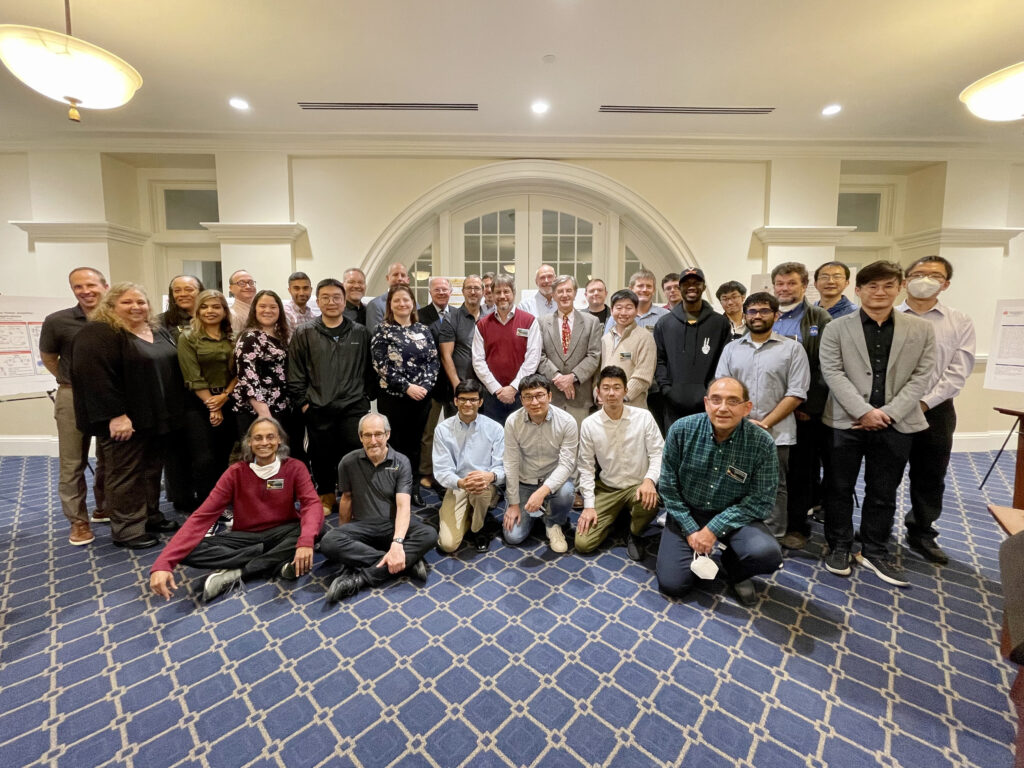By Christina Clark
The SpectrumX Center Meeting on October 3 and 4, held at the University of Virginia (UVA), brought together over 65 learners and leaders for cross-cutting discussions on timely and interdisciplinary topics.
“The meeting provided an opportunity for students, researchers, stakeholders, and professionals in policy making to come together at UVA to discuss some of the most important subjects in our field,” said Bobby Weikle, SpectrumX Steering Committee Chair and Radio and Network Technologies Research Lead, and Professor at the University of Virginia. “UVA has a long history of collaboration with the National Radio Astronomy Observatory (NRAO), and it was a great opportunity to bring their teams and our center together in-person and online.”
Discussion topics and sessions included Spectrum Sovereignty, Inclusive Mentoring in Education and Workforce Development, Spectrum Sensor Deployment, Broadband Mapping and Spectrum Policy, student presentations from Olin College of Engineering and posters from UVA, “moonshots” for the SpectrumX center, networking sessions, and tours of the UVA and NRAO facilities.
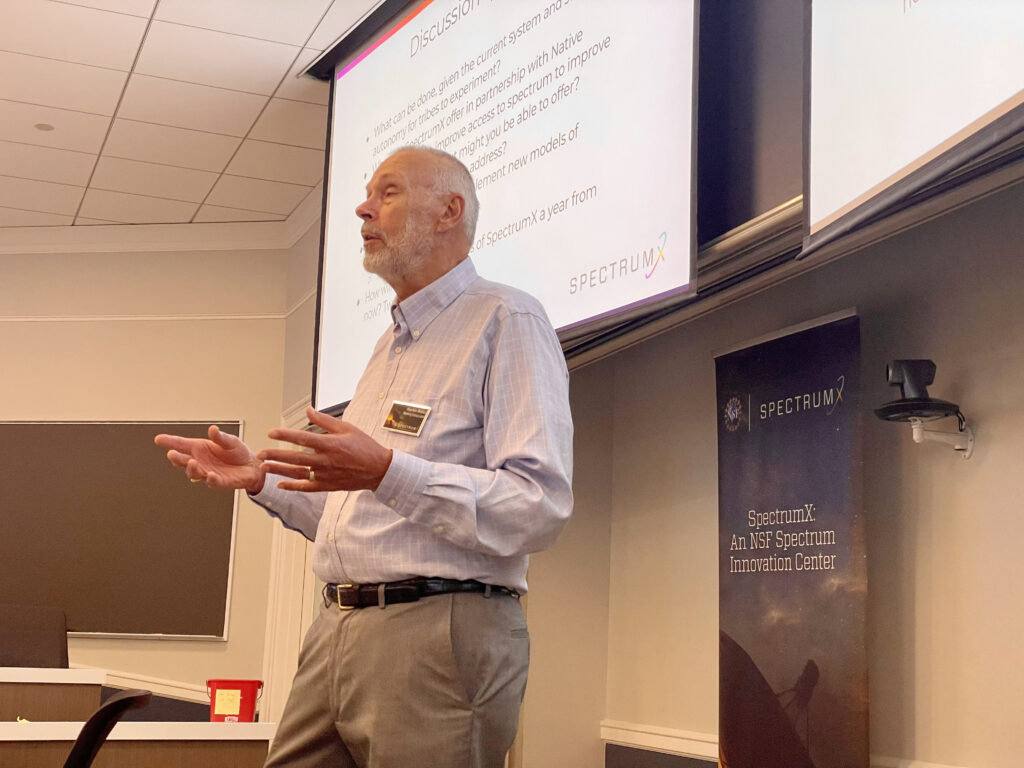
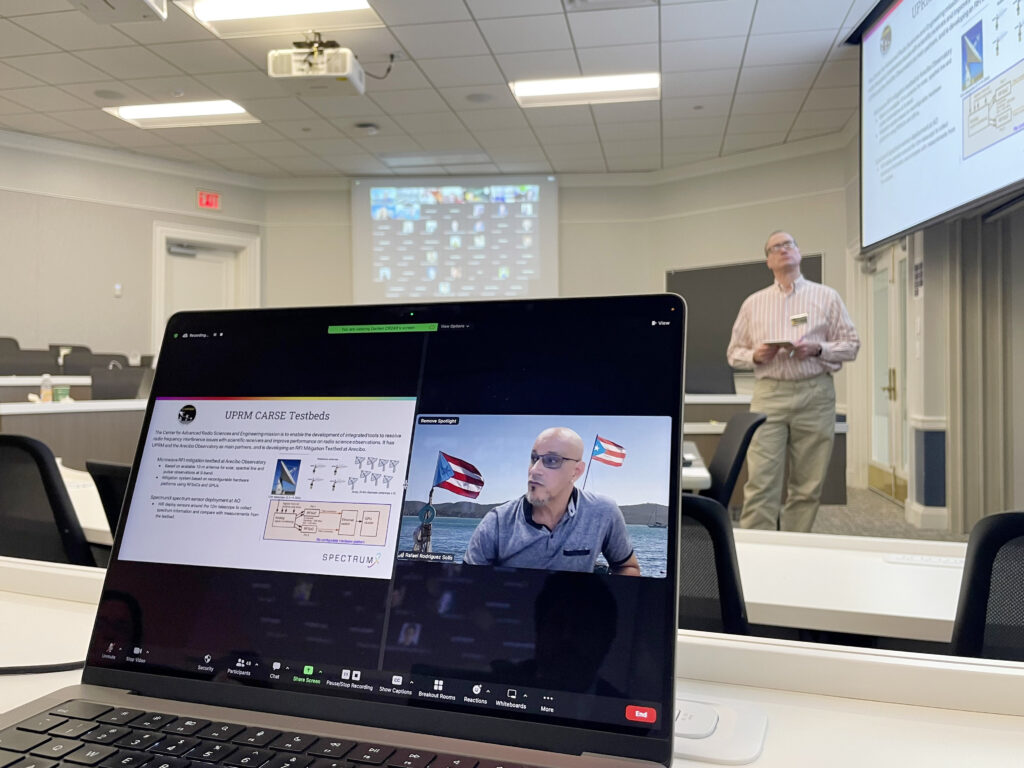
During the Spectrum Sovereignty session, led by Martin Weiss, SpectrumX Economics and Policy Research Working Group Lead and Professor at the University of Pittsburgh, Weiss discussed the obstacles Native American nations face in economic, policy, and spectrum governance. He highlighted the disparity in access by sharing that “35.4 percent of Americans living on reservations were not connected to broadband internet, compared to 7.7 percent of all Americans.”
Weiss shared the findings of a paper, “Spectrum Sovereignty on Tribal Lands: Assessing the DIGITAL Reservations Act,” co-authored with Ilia Murtazasvili, SpectrumX Research partner and Professor at the University of Pittsburgh, and Darrah Blackwater, an independent consultant. He shared that SpectrumX research partners were working to improve broadband access by working with the Navajo Nation, Yalti Telecom, a start-up that connects broadband access into rural areas, and The ACES School.
Anja Fourie, SpectrumX Education and Workforce Development Director, from the National Radio Astronomy Observatory (NRAO), presented on the center’s Education and Workforce Development’s progress. She gave an update on curriculum development, focusing on grades 6 to 12, undergraduate, and graduate programs in the radio spectrum sciences. Fourie also introduced the NRAO’s RADIAL program, which will be a partner to engage Minority Serving Institutions (MSIs) in the center’s activities.
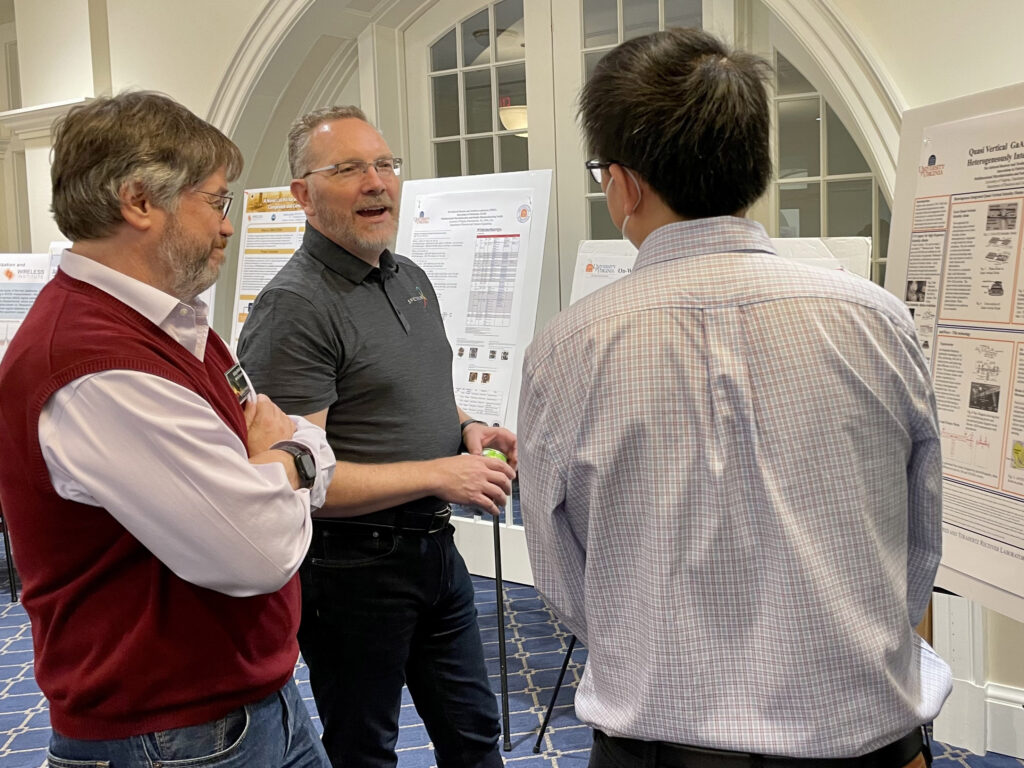
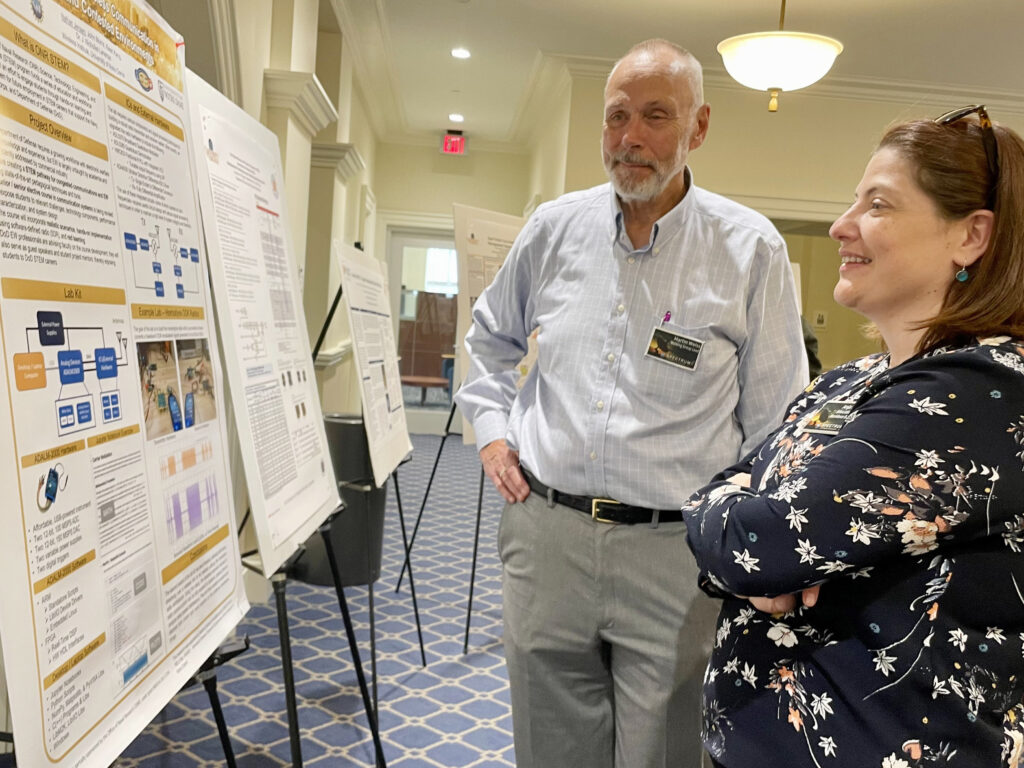
The Education and Workforce Development Working Group’s plan for a Mentor Training Program was also introduced to the meeting attendees by Fourie.
“One of the primary reasons why many students from historically marginalized groups (HMGs) do not graduate from these institutions is race-related stressors that leave them feeling targeted, unsupported, and isolated,” Fourie said. The mentor program aims to promote enrollment, and support retention and success for students pursuing studies in the radio spectrum space.
The SpectrumX Sensing Project Team hosted a presentation and discussion of the RadioHound sensor development and future deployments. Bert Hochwald, Sensing Project Team Lead and Professor at the University of Notre Dame, highlighted the specifications of the current and envisioned sensors, defined what a successful deployment would look like, and outlined potential deployment locations for the sensors.
Hochwald gave deployment examples of the sensor to take readings at such locations as the MIT Haystack Observatory, the Table Mountain Quiet Radio Zone, Arecibo Observatory, and in partnership with the Navajo Nation.
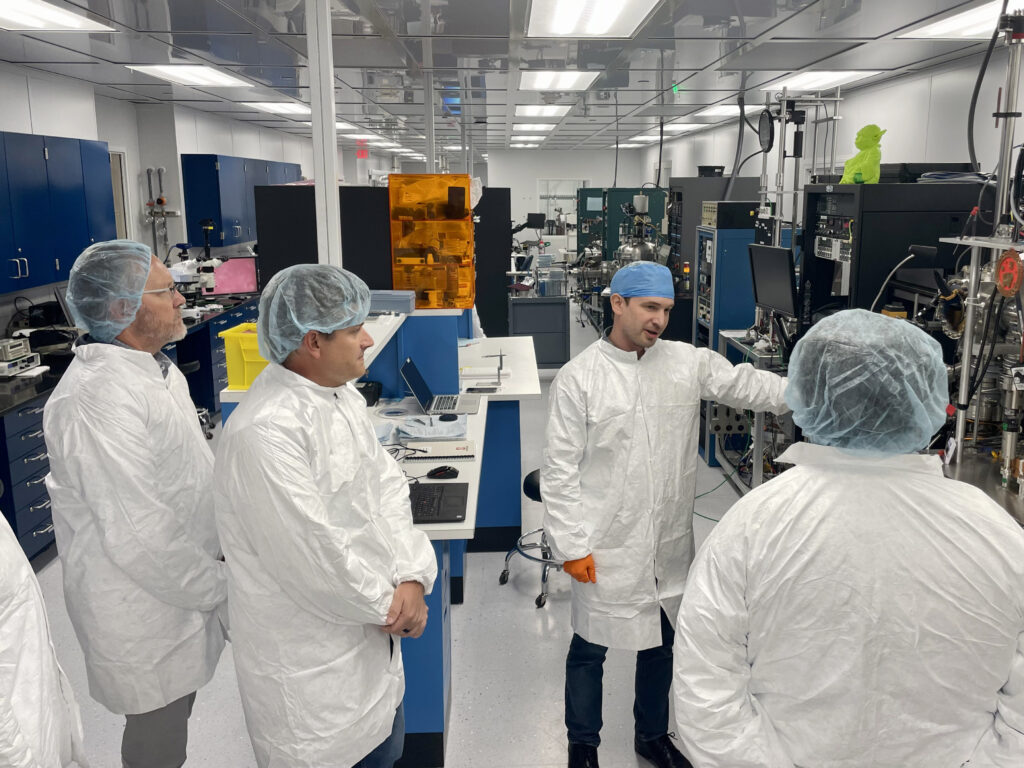
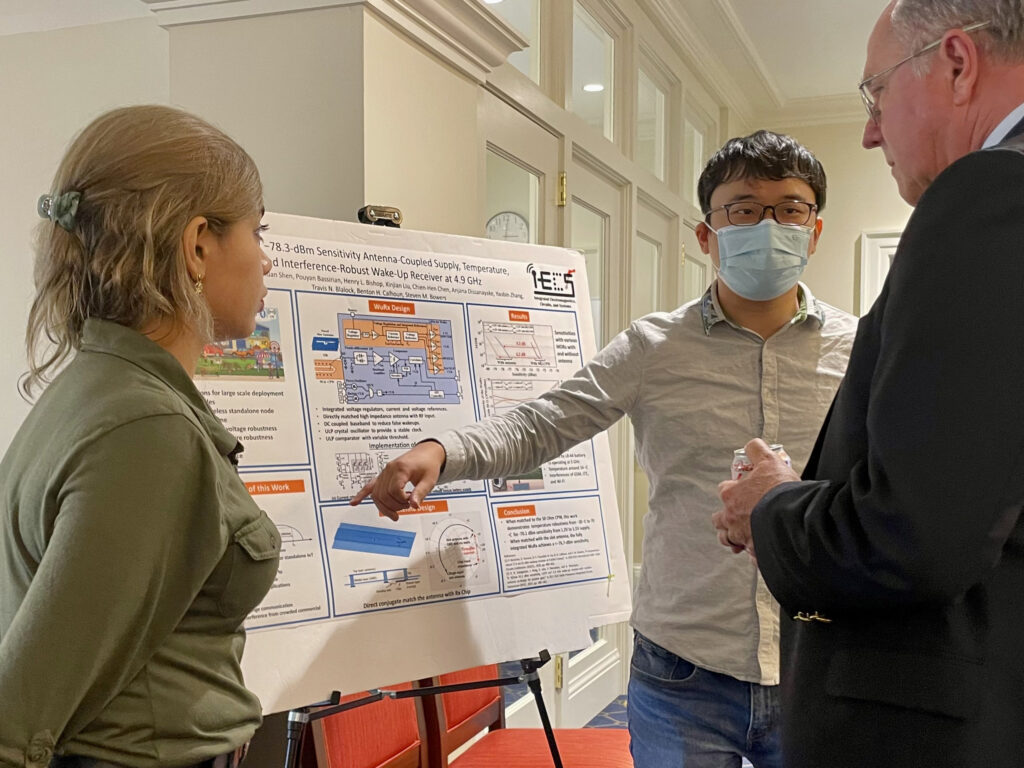
Monisha Ghosh, SpectrumX Policy Outreach Director and Professor at the University of Notre Dame, hosted a discussion around the center’s Broadband Mapping Project and Spectrum Policy. Ghosh said the project will be a way to include students at Minority Serving Institutions (MSIs), and will empower them to become expert data collectors in the field. The Broadband Mapping Project will allow readings to be taken in assigned geographic areas, to give clarity to how broadband access is being supported in communities, and to help identify areas that are being underserved.
The SpectrumX Center leadership, research partners, and meeting attendees also participated in an ideation session around online resources like SpectrumWiki.com, and explored “moonshots” for the center’s future plans.
Students from Olin College of Engineering, studying under Whitney Lohmeyer, SpectrumX Use Cases and Coexistence Research Working Group Lead, gave presentations to the center meeting attendees on their current research. The presentations were a mid-semester update on their research topics, which focus on comparing two sides of a spectrum coexistence challenge. The students were given feedback and resources from meeting attendees to further grow their topic knowledge.
In-person attendees of the meeting were able to attend a poster session of student work at the University of Virginia, tour UVA and NRAO facilities, and expand their professional networks.
“This meeting was a successful gathering of radio spectrum stakeholders and researchers discussing the most current focal points of the center’s work,” said Scott Palo, SpectrumX Associate Director and Professor at the University of Colorado Boulder. “We look forward to continuing to innovate and consider different perspectives as we seek to become the academic, innovative, and collaborative hub of the radio spectrum community.”
Learn more about the meeting and see the agenda: here.
